10 Priceless Tips for Visiting the Mystical Meteora, Greece
Visiting Meteora, Greece should be on top of your travel list.
The sight of the mystical, hanging Meteora Monasteries, atop the massive, monolith rocks, challenges even the wildest imagination.
However, you need some planning and preparation before venturing on this marvelous adventure.
To help your visit to Meteora be at least as memorable as your first kiss, I’ve gathered these invaluable travel tips and useful information. In this guide, you’ll find everything you need to know about visiting Meteora and exploring its mind-boggling monasteries.
Let’s dig in!
Disclaimer: This post contains affiliate links. If you purchase something through one of them, I may receive a small commission at no extra cost to you. Thank you for helping me create free content on this website!
1. Find Out the Best Time to Visit Meteora, Greece
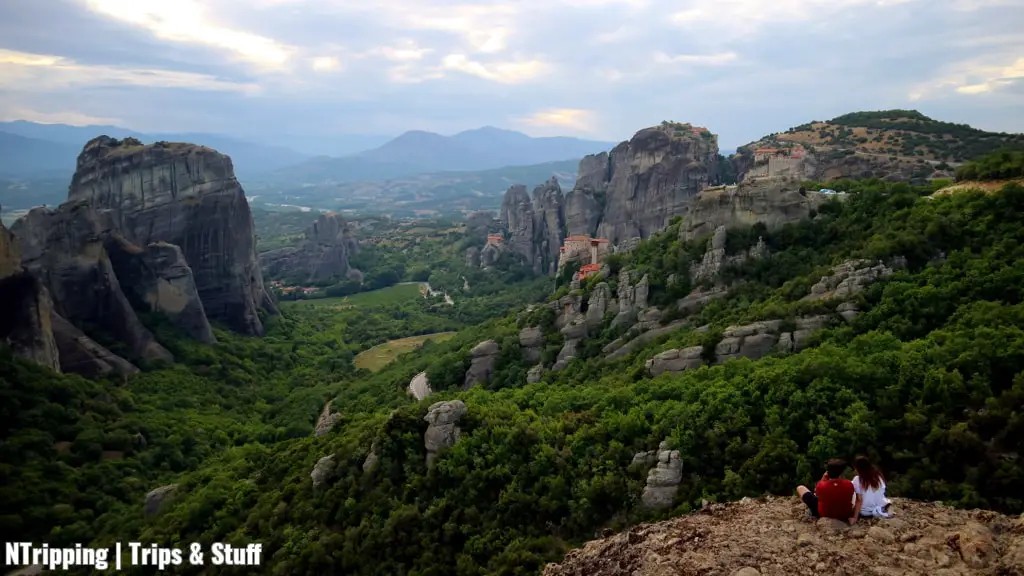
Greece has a moderate climate. Hence, the best seasons to visit Meteora are spring and autumn. Winter might be too windy and wet, while the summer heat resembles a visit to the sauna.
From March to June and from September to November, the weather in Meteora is optimal. It’s neither too hot nor too cold. The temperatures are pleasant to walk around and the days are long enough to explore the monasteries and the cliffs.
The best months to visit Meteora to marvel at the vibrant foliage are May and October. The countless shades of green in May and the stunning hues of golden in October will flabbergast you.
✔️ Tip: Consult the table below with the opening hours and closed days of Meteora Monasteries to know what time of day and in which order to visit them.
2. Consider the Meteora Monasteries Opening Hours and Closed Days
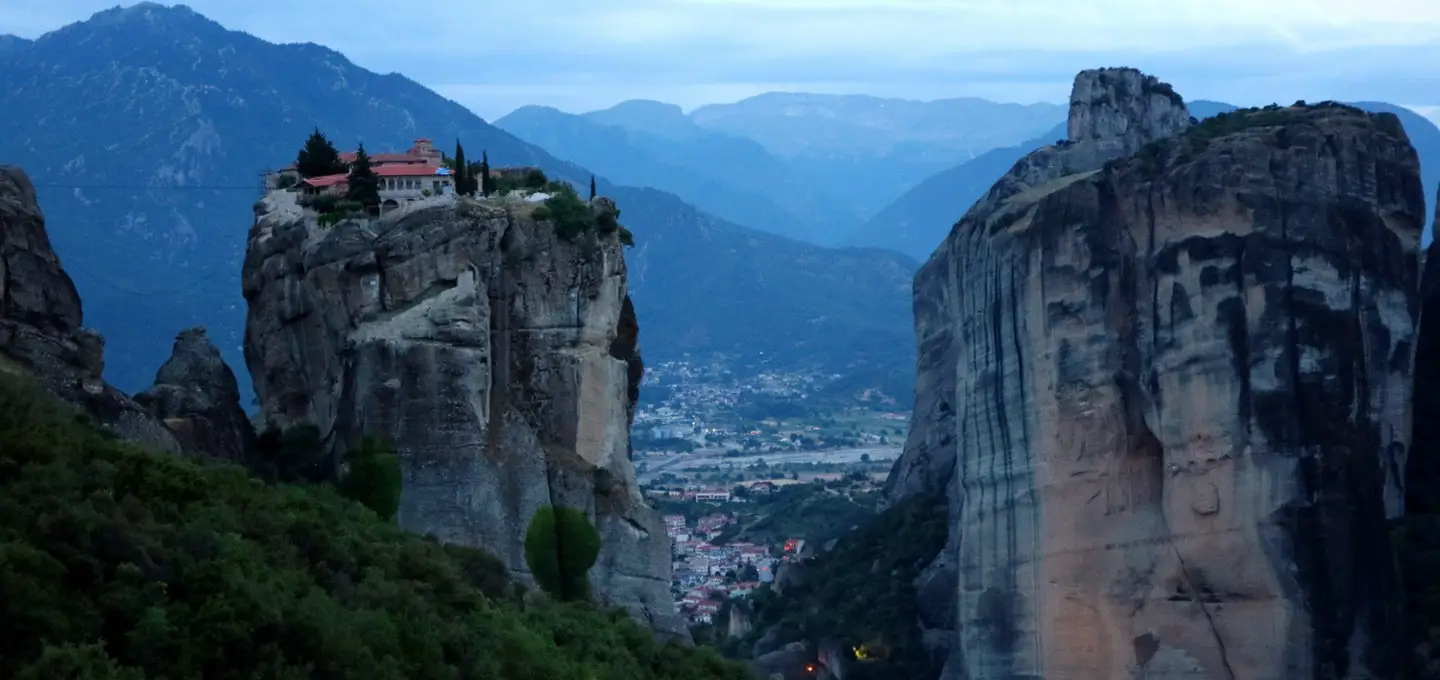
To avoid unpleasant surprises, such as climbing all the way up to a monastery and finding out it’s closed on that day, consult the timetable with the opening hours and closed days of the Meteora Monasteries for the summer and winter seasons.
✔️ Tip: The entrance fee for each of the Meteora Monasteries is €3.00 ($3.25) and has not changed in years. Children under 12 years can visit for free.
Summer Opening Hours (from April 1 to October 31)
| MONASTERY | OPENING HOURS | CLOSED |
| St. Stephen Monastery | 9:00 AM – 1:30 PM and 3:30 PM – 5:30 PM | Mondays |
| The Great Meteoron Monastery | 9:30 AM – 3:00 PM | Tuesdays |
| Roussanou Nunnery | 9:00 AM – 3:30 PM (9:00 AM – 3:00 PM on Sundays) | Wednesdays |
| The Monastery of the Holy Trinity | 10:00 AM – 4:00 PM | Thursdays |
| Varlaam Monastery | 9:00 AM – 4:00 PM | Fridays |
| St. Nicholas Anapafsas Monastery | 9:00 AM – 5:00 PM | – |
Winter Opening Hours (from November 1 to March 31)
| MONASTERY | OPENING HOURS | CLOSED |
| St. Stephen Monastery | 9:30 AM – 1:00 PM and 3:00 PM – 5:00 PM | Mondays |
| The Great Meteoron Monastery | 9:30 AM – 2:00 PM | Tuesdays, Wednesdays, and Thursdays |
| Roussanou Nunnery | 9:30 AM – 2:00 PM | Wednesdays |
| Monastery of the Holy Trinity | 10:00 AM – 4:00 PM | Thursdays |
| Varlaam Monastery | 9:00 AM – 3:00 PM | Thursdays and Fridays |
| St. Nicholas Anapafsas Monastery | 9:00 AM – 4:00 PM (9:30 AM – 4:00 PM on Sundays) | – |
3. Calculate Enough Time for Each Meteora Monastery
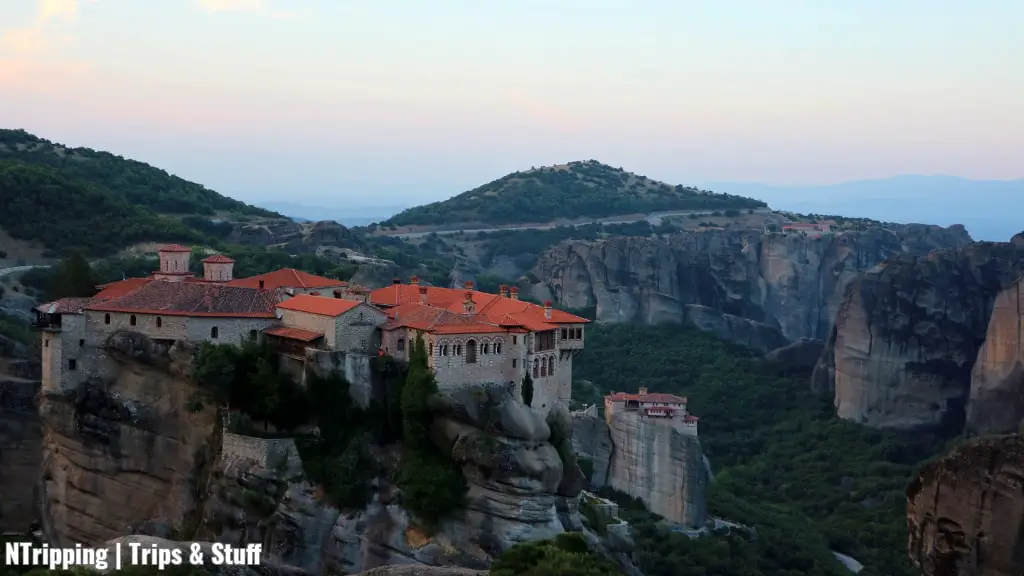
You better plan sufficient time for your visit to Meteora.
Remember, that the time needed to visit each of the monasteries is between one and two hours. This excludes hiking between the monasteries and only takes into account the climb to the entrance from the road.
The larger monasteries are more crowded, and include more buildings and artifacts to explore. You’ll spend a considerable amount of time walking around and peeking into every corner.
Meanwhile, in the smaller monasteries, you might want to enjoy the tranquility and fully immerse yourself in the fascinating surroundings for a longer time.
✔️ Tip: Check out my advice below on how to split your visit to the six monasteries in two days.
4. Beware How Difficult Visiting the Meteora Monasteries Is
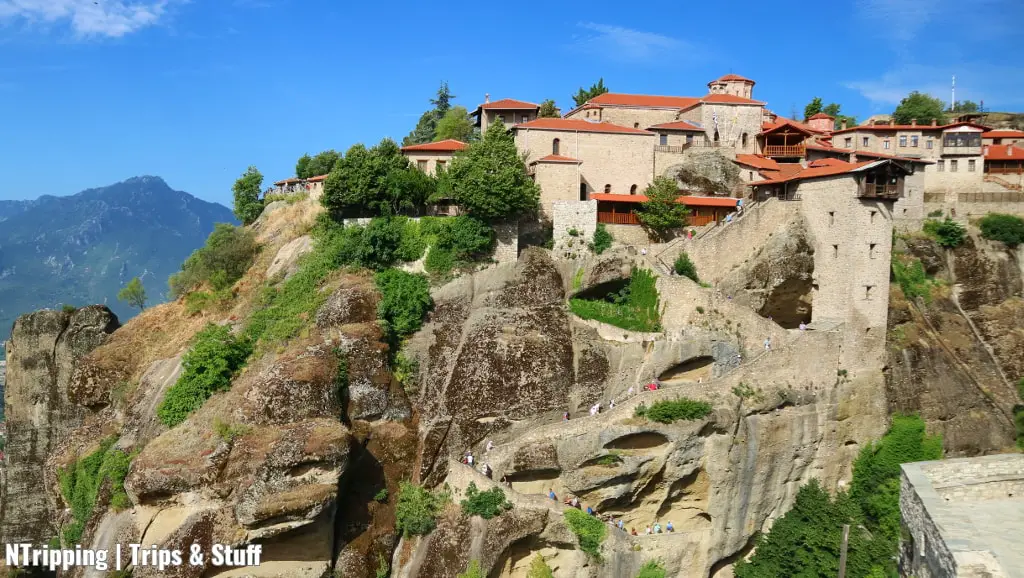
I am not going to sugarcoat it for you.
The way to the top of all but one of the Meteora Monasteries is tiring.
Below, you’ll find how many steps there are and how difficult it is to climb to the Meteora Monasteries:
- The Great Meteoron: 270 steep and winding steps take you to the top of the plateau. It is rather difficult to climb. Moreover, if you’re not among the first visitors of the day, you’ll have to follow a line of other tourists all the way up.
- The Varlaam Monastery: A little less treacherous to visit than its neighbor, with “only” 150 steps to ascent.
- The Roussanou Nunnery: Roughly 200 steps will take you to the entrance. They’re not as steep as the other stairways, though. Also, there are benches where you can rest mid-way.
- The Monastery of the Holy Trinity: A long walk takes you to the base of the stone pillar. The following 140 steps are not the steepest you’ll encounter in the area. We found it less tiring than climbing to the Great Meteoron.
- The St. Stephen Monastery: The most accessible Meteora Monastery with no steps at all to conquer. Hence, it was the most crowded monastery.
- The St. Nicholas Anapafsas Monastery: I couldn’t catch my breath for long enough to count the steps, I’m sorry. An extremely steep path, alternating with even steeper stairs, leads to the smallest and least visited but unique and surprisingly welcoming of the Meteora Monasteries. Despite being exhausting, if time and your fitness allow it, definitely visit this monastery!
5. Divide the Visits to the Monasteries in Two Days
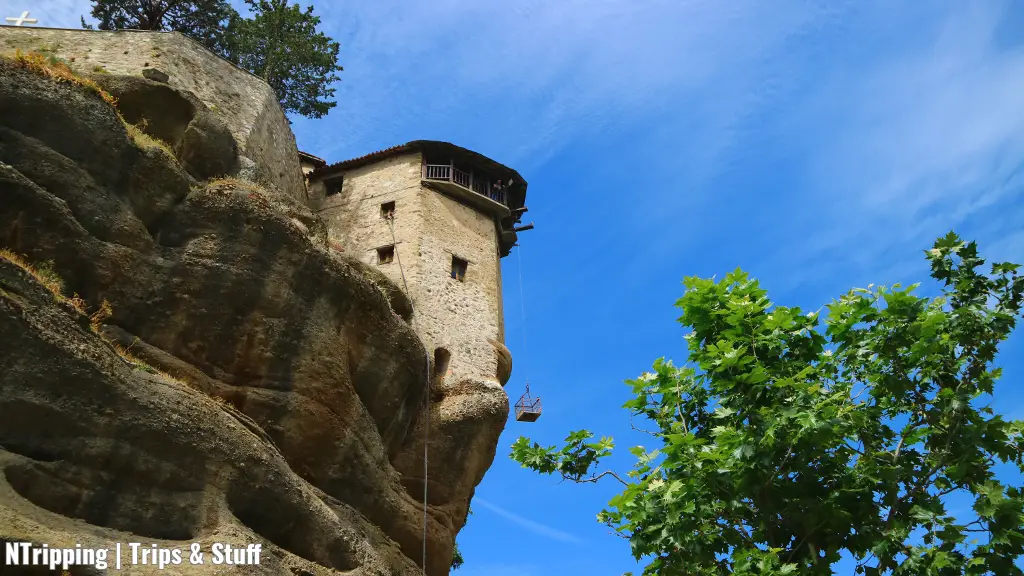
If you’re wondering how long to spend in Meteora, plan to stay at least two full days in the area.
It’s hard to visit more than three monasteries per day. Even if you physically manage to climb all the stairs, your head will spin and you will be mindblown from all the magnificent sights. You will end up mixing every detail, every sight, every scent, and every moment in an intangible, messy muddle.
Only on weekends, all monasteries are open. And you’ve probably already guessed that it’s not advisable to visit Meteora, Greece on a Saturday or a Sunday.
So check the timetable again and plan enough time for visiting AND fully enjoying the Meteora Monasteries.
Depending on the days of the week when you’re visiting you may need to swap Day 1 with Day 2 according to the Meteora Monasteries’ opening hours.
My advice is based on driving between most of the monasteries. Hiking from Kalambaka or Kastraki is also possible and the trails are well marked but the focus of this guide is on visiting the Meteora Monasteries, not the rock formations.
✔️ Tip: If you can only afford to visit on a day trip from Athens to Meteora, I advise you to take an organized tour to maximize your time.
Day 1 in Meteora: The Great Meteoron Monastery, Varlaam Monastery, Roussanou Nunnery, and a Meteora Sunset
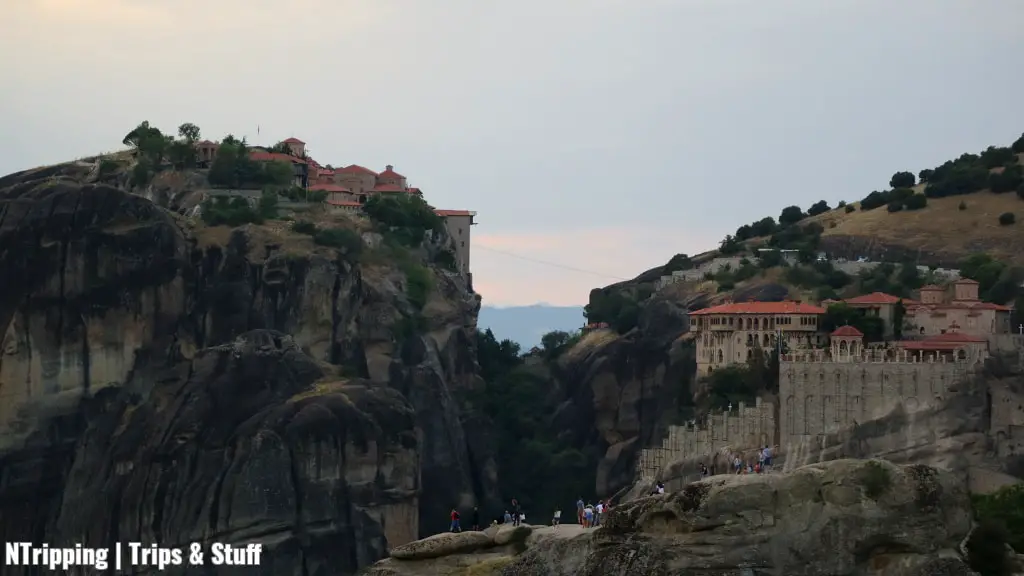
The Great Meteoron is the most visited of the Meteora Monasteries. The size and splendor of the buildings, as well as the fantastic views, make it easy to understand why.
Try to visit it as early as possible. You cannot avoid all tourists but at least those who come from further away than Kalambaka will not arrive before 10:00 AM.
Buses and cars fill the parking lot fast and block the whole street between the Great Meteoron and the Varlaam Monastery. So if you’re driving, park the car somewhere between the two monasteries and after visiting the former, walk to the latter.
After finishing your visit to the Great Meteoron, proceed as quickly as possible to the Varlaam Monastery.
Since the stairs to these two monasteries – but mostly the views, of course – will leave you breathless, visit next the nearby Roussanou Nunnery.
The steps, which lead to what many claim to be the prettiest of the Meteora Monasteries, are more in number than the ones you’ve just climbed to the Varlaam Monastery. However, they are not as steep and the climb is less tiring.
If you were very quick and only snacked between the monasteries, go for lunch and a nap now. Then, return refreshed for a majestic Meteora sunset!
Dress warmly as the wind can become fierce in the evening and send chills down your spine, even after a hot summer day.
Day 2 in Meteora: St. Stephen Nunnery, Monastery of the Holy Trinity, St. Nicholas Anapafsas Monastery, and a Meteora Sunrise
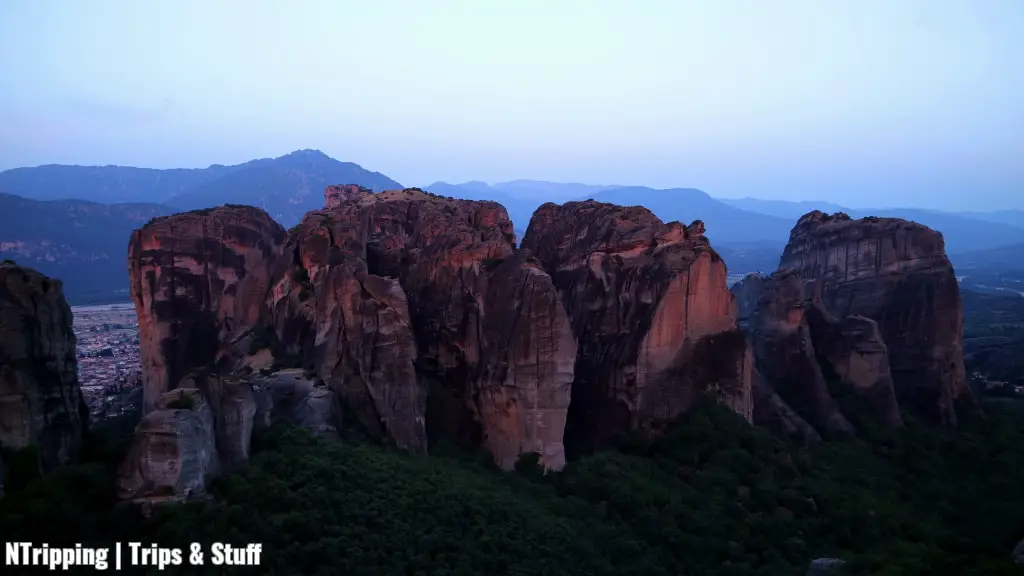
If you thought your sunset photos were great, don’t miss a Meteora sunrise photo session as well!
Wake up before everybody else and head to the cliffs. You will most probably have the views all to yourself. Not only that, but the sun rays will reflect from the rocks, painting them in gentle pink hues, unlike anything you’ve ever seen.
After breakfast, visit the rest of the Meteora Monasteries.
St. Stephen Monastery is the easiest accessible and the most crowded one. Hence, it is probably best to visit it first.
Don’t forget that it also closes between 1:30 PM and 3:30 PM. We made the mistake of visiting this Meteora Monastery shortly before it closed. It was jam-packed with tourists, which partially ruined the experience for us.
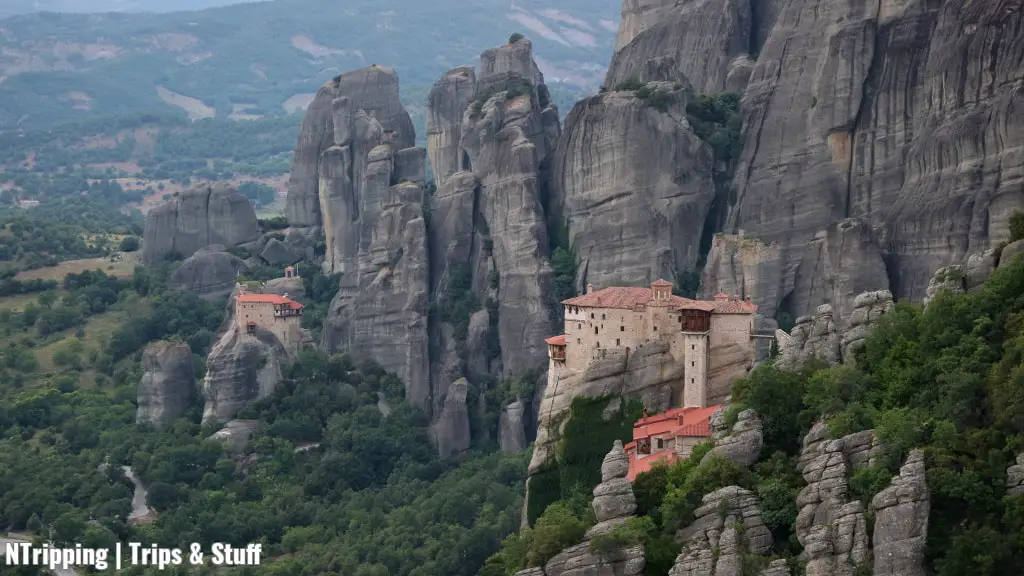
Next, go to the Monastery of the Holy Trinity. You’ll reach it via a long pathway, followed by a steep staircase. Despite that numerous sources call it the hardest to climb, that wasn’t our experience. It was well-visited but not as crowded as the other Meteora Monasteries.
The hardest to reach in our experience is St. Nicholas Anapafsas. This explains the fact that it is the least visited of the Meteora Monasteries. It’s also the smallest but it feels extremely cosy and welcoming. If you manage to climb to the top, you will be rewarded with the sight of the ruins of several deserted, inactive Meteora Monasteries as well.
✔️ Tip: If you haven’t had enough of the fantastic views from the monasteries’ yards, you can return at any time to any of the numerous observation spots to further marvel at the Meteora Rocks and to photograph the exterior of the monasteries.
6. Plan How to Get to Meteora in the Most Convenient Way
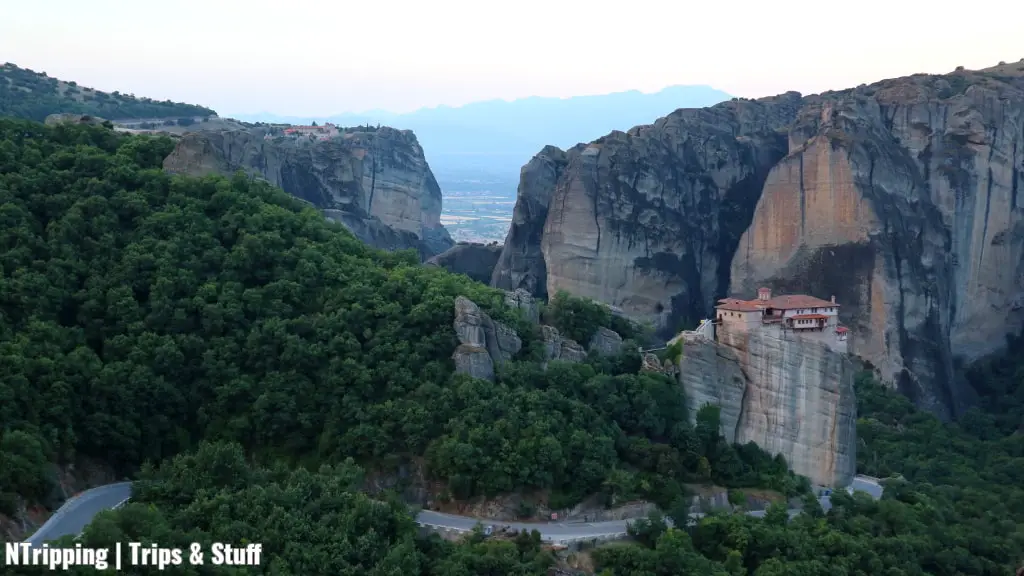
You have several options for visiting Meteora, Greece. The most convinient ones are by car and by joining an organized tour.
While traveling by car is definitely the most comfortable option, it is also the most expensive one. Don’t forget to calculate the toll fees on Greek highways into your overall transportation budget.
To reach Meteora from Athens by car, drive the National Greek Road Athina – Livadia – Lamia and follow the signs to Kalambaka. If you don’t have your own wheels, you can easily rent a car in Athens.
To help you plan your trip better, here are the distances from the three largest Greek cities:
- Athens – Kalambaka: 355 km / 220 mi.
- Thessaloniki – Kalambaka: 230 km / 140 mi.
- Larisa – Kalambaka: 83 km / 52 mi.
The roads to the Meteora Monasteries are steep and windy but in great condition. Some sections are wide and can accommodate both parked and moving vehicles. In others, it is difficult to squeeze a tiny car past a moving bus.
Parking lots get jam-packed in the late morning hours and remain full until the last minutes of the monasteries’ opening hours.
The other options to get to Meteora is by bus or by train. Buses and trains connect Kalambaka, the gateway to Meteora, with the major Greek cities. Unfortunately, they’re quite unreliable. Currently, no regular trains travel to Kalambaka.
In Kalambaka, you can join a small group tour, rent a car, scooter, or bike, and even trek the hiking trails around Meteora.
7. Check Out How to Hike to the Meteora Monasteries
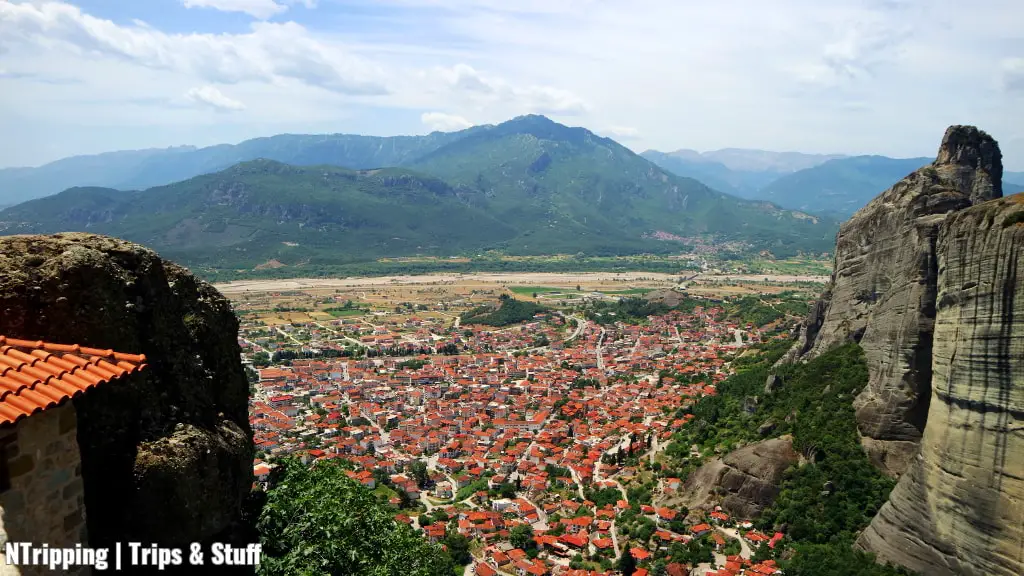
You can hike up to the Meteora Monasteries from Kastraki or Kalabaka. There are several routes you can follow. The most popular one is a loop trail that starts near Kalabaka. It’s 18.3 km / 11.4 mi long and it takes about 5 hours to finish.
You’ll need to alternate between the main road and the trail through the forest. Some sections are steep but you don’t have to be a pro hiker to manage them.
The hike to the first two monasteries is quite short but to get to all of the Meteora Monasteries and to visit the hermit caves, you need to engage in a serious hike.
8. Follow the Rules to Make the Best of Your Visit to Meteora
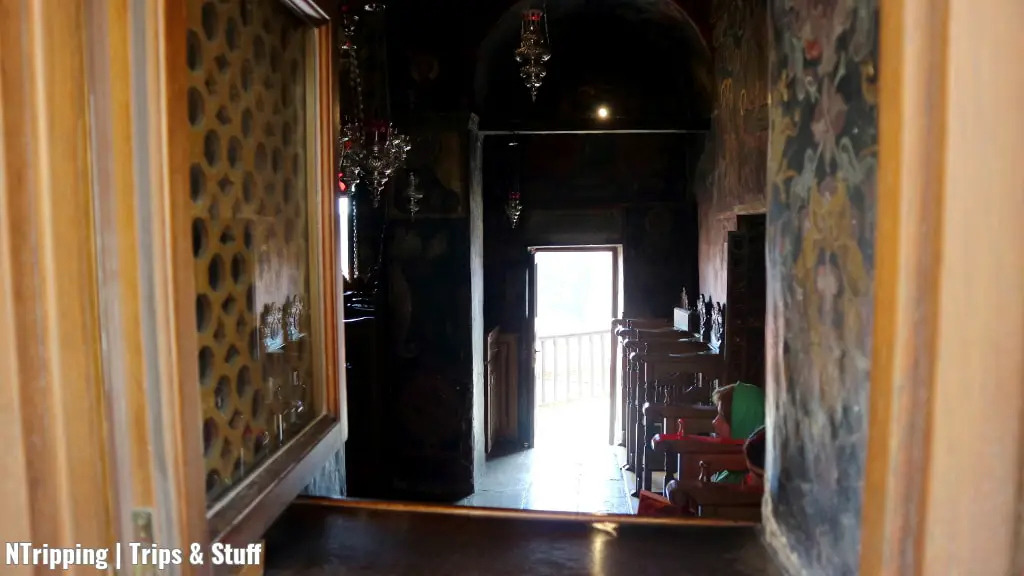
Tourists from all over the world storm to visit Meteora, Greece. Remember, that the mystical, hanging monasteries are active places of worship.
For this reason, you should follow these rules:
- Dress conservatively. Men should wear long pants and sleeves, while ladies should dress in long dresses or skirts and cover their shoulders. Moreover, female visitors should cover their pants, even the long ones, with a dress (provided at the entrance of each monastery).
- Take off your headwear. You should remove your cap or hat when entering a church or a cathedral, not only in Meteora but also in all East Orthodox temples.
- It’s forbidden to take photos. Photographing and taking videos is forbidden inside all churches and cathedrals of the Meteora Monasteries. You can take your selfies outside, in the courtyard.
- Modern, clean WCs are available for free in all monasteries. They feature squat toilets. The only “toll” you have to pay is at the Roussanou Nunnery, where you need to climb down 20 additional steps to the toilets and then back up to the pathway.
- There are no eateries in and around the Meteora Monasteries. You’ll have to drive back to Kastraki or Kalambaka for a proper sit-down or takeaway lunch.
- You’ll find water, snacks, and souvenirs in some parking lots. Vendors sell them in the parking areas of the Great Meteoron Monastery, Varlaam Monastery, and St. Stephen Monastery because these three monasteries are the largest and most visited ones.
9. Research Where to Stay near Meteora in Kalambaka and Kastraki

No matter which accommodation you choose in Kalambaka or the neighboring Kastraki, make sure it features a view of the Meteora Rocks. After all, that’s what you’ve come here to experience in the first place, right?
Here are several hotels in Kalambaka, Greece, as well as in the village of Kastraki, which will make your stay memorable:
- Mythos Guesthouse: An authentic, simple guesthouse with hospitable staff and a good restaurant at the edge of the Old Town of Kalambaka.
- Monastiri Guesthouse: A luxury guesthouse with a pretty inner yard, close to the train station.
- Pyrgos Adrachti: A rustic guesthouse in neighboring Kastraki, 2 km / 1.2 mi from Kalambaka and the St. Nicholas Anapafsas Monastery.
- Dellas Boutique Hotel: A modern, posh accommodation located in the middle of the road between Kalambaka and Kastraki.
- Grand Meteora Hotel: 5-star luxury just outside of Kastraki in intimate surroundings.
Need more options? Check out my list of the 10 best hotels to stay near Meteora.
10. Discover More Things to Do in Kalambaka
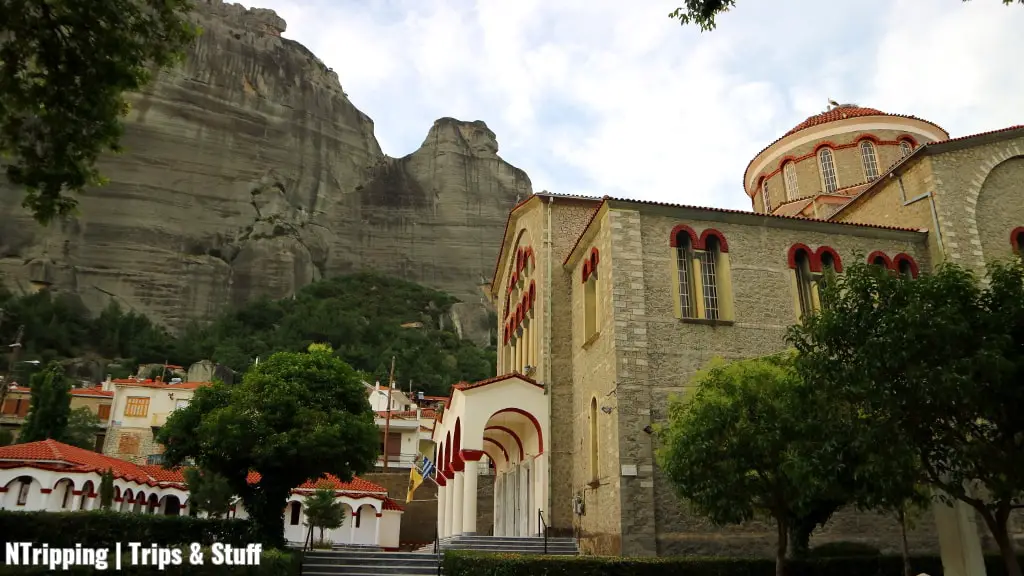
Of course, the main attraction in Kalambaka is Meteora.
However, the small, picturesque town offers a few other things to do as well.
- Natural History Museum of Meteora & Mushroom Museum: Visit this surprisingly diverse collection of stuffed animals and dried mushrooms.
- Greek Education Museum: Learn about the Greek school system and the geological formation of Meteora.
- Vissarion Metropolitan Church: Marvel at the magnificent stone building, which stands tall at the edge of Kalambaka’s Old Town.
- Panagia Church: Visit this hidden gem, tucked between the huge Meteora boulders at the feet of the pillars.
- Church of the Assumption: Tour the 7th-century church with beautiful frescoes and a well-preserved interior.
- Orthodox icons: Learn about the incredible art of iconography or shop for icons at the craft shops along the road east of Kalambaka.
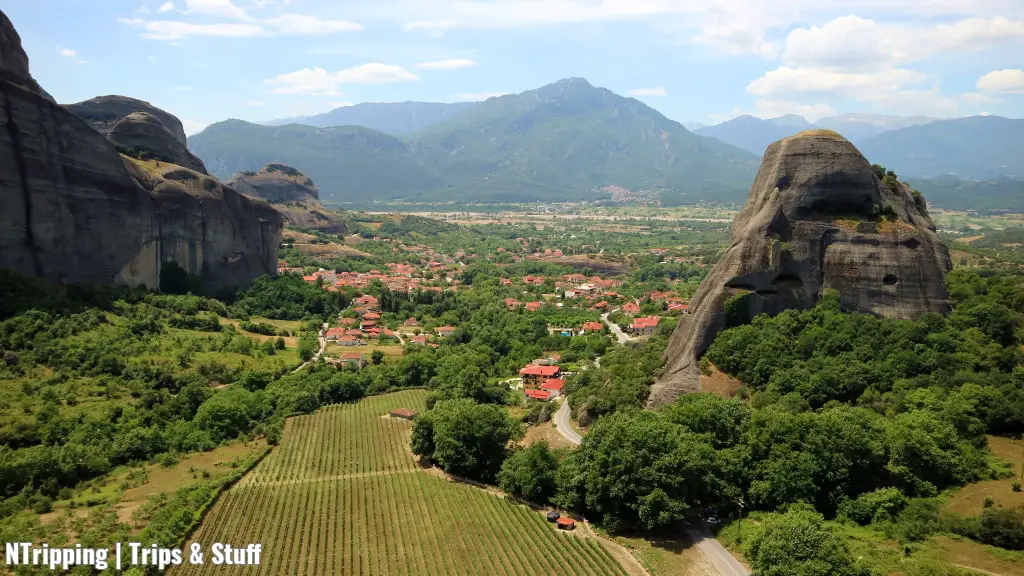
- Greek specialties: Try delectable Greek dishes in one of the numerous restaurants and taverns. Here are some suggestions:
- Restaurant Meteora: An upscale restaurant in the center of Kalambaka, serving traditional Greek cuisine. You simply must try their signature veal with onions.
- Platanos: An authentic tavern near the old town of Kalambaka, serving home-cooked food to travelers since 1953. Their lunch menu is worth tasting, especially the delectable moussaka.
- Yamas: A traditional Greek tavern at the entrance of Kalambaka when coming from Kastraki, serving simple but delicious meals. Their fresh Greek salad is to die for.
- Pub 38: A craft beer pub in the center of Kalambaka, also serving fast food with a Greek twist.
- Meteora spirits and wines: You can’t afford to miss the local produce after seeing the perfectly maintained vineyards. You can order spirits and wines from Meteora in the eateries above or buy some as souvenirs. Check out Tsinas Wine Shop in Kalambaka’s center. The local wines, ouzo, and brandy will satisfy even the most passionate aficionados.
Visiting Meteora, Greece Is an Experience You’ll Never Forget
I will admit to you up-front…
If you visit all of the Meteora Monasteries, watch the sunset, and get up before dawn to awe the Meteora sunrise, you’ll be exhausted as hell and need a vacation from the vacation!
The emotions, the sights, and the overwhelming creations of nature and the human spirit will wash over you like a gigantic Tsunami wave.
So before you even think of visiting Meteora, Greece, do yourself a favor and use these tips to plan and prepare for your trip.
Now, it’s your turn:
Are you ready for the emotional roller coaster, called Meteora? Which tip did you find most useful?
Let me know in the comments below!
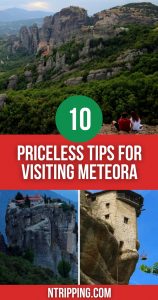
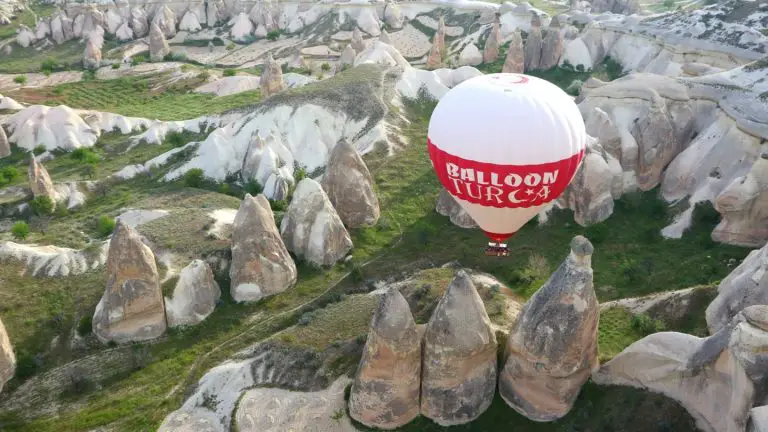
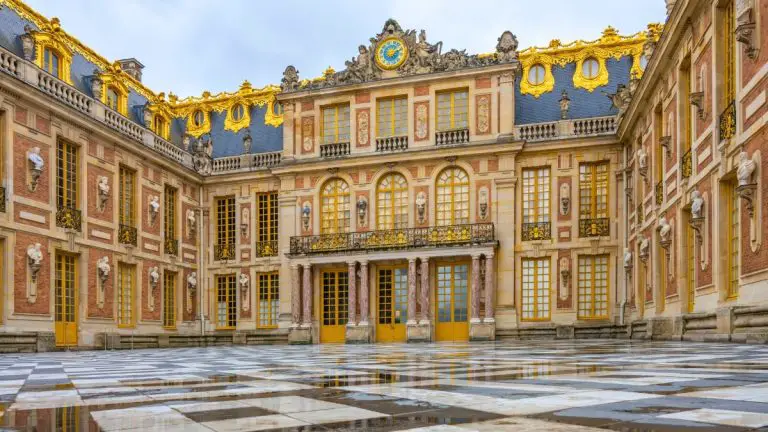

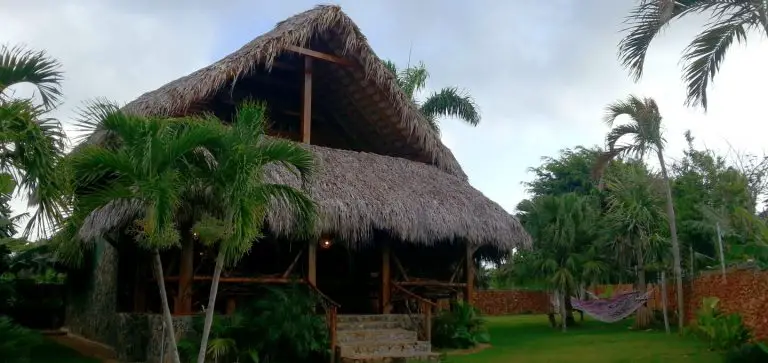
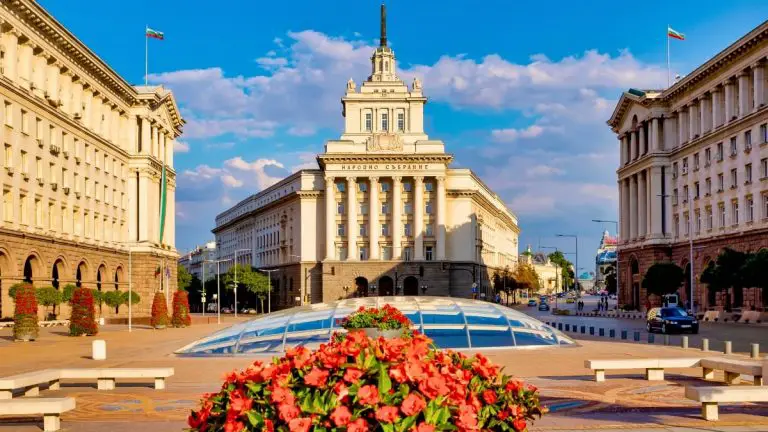
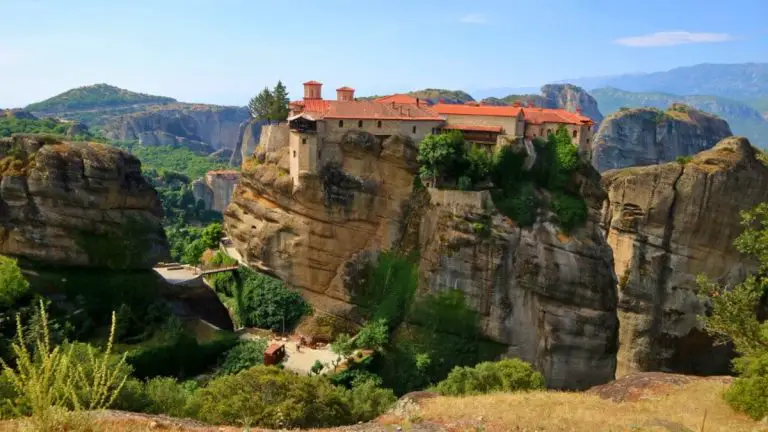
Thank you. Just what I was looking for to plan 3 nights in Kalabaka.
Hey Julie, glad the post helped!
Have a fantastic trip to Meteora and let me know if you need further assistance with planning :)
Happy travels,
Naddya
Where is the best spot to see sunrise and sunset.Are there locals to do a tour guide for a day?
Hi Lisa,
there are well-marked viewpoints and observation decks on the main road. You can easily see them on Google Maps. You can leave your car there and walk a few steps to find the perfect spot for a sunrise or sunset.
I liked one between Holy Trinity and Roussanou Monateries, you can see the view from there in the photo in the first tip. The parking spot at the Great Meteoron is also amazing, especially to listen to the bells of the monastery at sunrise.
Ask at your accommodation or in the center of Kalambaka for any tours. But in my opinion, you don’t need a guide for this activity in Meteora. And if you don’t have a car, you can rent one or hire a bike to help you move around.
Cheers and happy travels!
N.